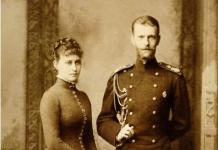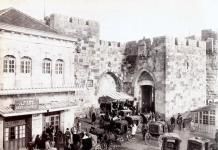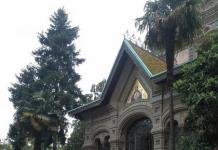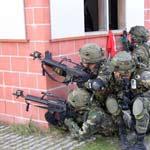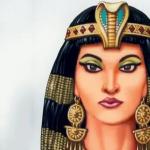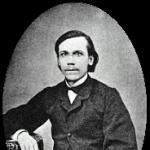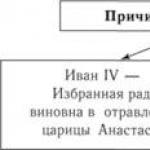“I read with interest in one of the issues of “Professional” about the French Foreign Legion. But I recently learned about the existence of a little-known Spanish Legion. What kind of military formation is this?”
Sergeant
contract service
Roman KHRUSTALEV.
Contempt for death
The prototype of the Spanish army regiment founded in 1920 by General José M. Astray was the Foreign Legion of neighboring France, which even then had an impeccable military reputation. By the way, the legendary general himself (at that time a lieutenant colonel) showed miracles of courage on the battlefield, losing an arm and an eye in battle. It was he, the hero of the war in Morocco, who invariably fought in the front ranks and personally raised the fighters to attack, who wrote the phrase “Long live death, and long live reason!” that went down in history! (“Viva la muerte, y muera la inteligencia!”) Its first part is “Long live death!” - was the battle cry of the legion.
Having previously studied this military machine, perfect for those times, General Astrey formed the first three battalions of a new regiment, called “Foreign”. Having sworn allegiance to King Alfonso XIII (the Foreign Legion brigade now bears his name) on October 31, 1920, the regiment was immediately transferred to Morocco, where it participated in almost continuous fighting for seven years. Legionnaires could be distinguished from other soldiers not only by their military uniform, but also by the long, chin-length, thick sideburns that they grew. Traditionally, such sideburns were considered a symbol of contempt for death.
Taking Bushido, the code of honor of the Japanese samurai, as a basis, M. Astrey developed the 12 commandments of the legionnaire. They included commandments about courage, discipline, camaraderie, friendship, unity and mutual assistance, fortitude, etc. The most important commandment of the legion was considered the “death creed”: “To die in battle is the highest honor. They only die once. There is no pain in death, and dying is not as scary as it seems. There is nothing worse than living as a coward."  Why did the Spanish Legion begin its military history in Morocco? According to international agreements concluded in 1906 in Algeciras, this African country was divided into two zones, one of which was under the protectorate of Spain, and the other of France. Liberation movements periodically arose in Morocco, the goal of which was to expel foreigners from the country. The most famous rebel leaders were Mohammed Amezian - "El Mizzian", who captured the iron mines in the Rif, and Abd el Krim, who united groups of Moroccans who had once fought among themselves under his leadership. Abd el Krim operated primarily in the Spanish zone. His goal was to create an independent European-style state in the north of Morocco.
Why did the Spanish Legion begin its military history in Morocco? According to international agreements concluded in 1906 in Algeciras, this African country was divided into two zones, one of which was under the protectorate of Spain, and the other of France. Liberation movements periodically arose in Morocco, the goal of which was to expel foreigners from the country. The most famous rebel leaders were Mohammed Amezian - "El Mizzian", who captured the iron mines in the Rif, and Abd el Krim, who united groups of Moroccans who had once fought among themselves under his leadership. Abd el Krim operated primarily in the Spanish zone. His goal was to create an independent European-style state in the north of Morocco.
At that time, compulsory military service existed in Spain. Corruption, abuse and theft flourished in the army. The rich exempted their children from military service, sending young men from poor families to serve in the army instead for a fee. Without sufficient training, soldiers died in the thousands. The number of victims was so great that civil unrest began in Barcelona and other cities in Spain.
There was a need to create professional army units capable of resisting Moroccan troops, carrying out the most complex and risky operations, “fighting and dying with a smile on their lips and without a single complaint.”
The war in Morocco ended in May 1926, when Abd el Krim surrendered to the French. The last pockets of resistance were suppressed by 1927.
They were commanded by the Generalissimo  Legionnaires, including Russian emigrants, left a noticeable mark on the history of Spain during the Civil War. They marched in the forefront of the most ardent supporters of the overthrow of the Popular Front government - the troops of “socialists and communists” who tried to resist the putschists in the Canary Islands were crushed by legionnaires. Yes, it probably couldn’t have been otherwise - Francisco Franco Bahamonde himself, the future generalissimo, dictator and sole ruler of Spain until 1973, was none other than the former commander of the Spanish Foreign Legion.
Legionnaires, including Russian emigrants, left a noticeable mark on the history of Spain during the Civil War. They marched in the forefront of the most ardent supporters of the overthrow of the Popular Front government - the troops of “socialists and communists” who tried to resist the putschists in the Canary Islands were crushed by legionnaires. Yes, it probably couldn’t have been otherwise - Francisco Franco Bahamonde himself, the future generalissimo, dictator and sole ruler of Spain until 1973, was none other than the former commander of the Spanish Foreign Legion.
After the Francoists came to power, in accordance with the decision of the command of the national army, the number of legionnaires was reduced threefold. The six battalions that survived the reform again occupied their usual locations in Spanish Morocco (in Ceuta and Melilla) and in the Canaries. A small part of the former legionnaires subsequently took part in the Second World War on the side of Nazi Germany, fighting as part of the so-called “Blue Division”, although for a short time. But this group of volunteer fanatics managed to distinguish themselves by their particular ruthlessness and contempt for death. Their sophisticated cruelty inspired horror not only among their compatriots, but also among their German allies. Despite the fact that the legionnaires continually violated the rules established by the Germans, not a single German officer dared to reprimand them.  Legionnaires always fought on the front line in the most dangerous areas. They looked terrifying when, with huge flowing sideburns and long knives clenched in their teeth, they burst into Russian trenches. Drunk from the sight of blood, they cut the throats of the wounded and cut off the hands of captured partisans so that they could never take up arms again. They brought the severed fingers of their opponents to the camp as souvenirs. The Blue Division soldiers, who overwhelmingly avoided cruelty to prisoners and civilians, were horrified by the behavior of the “Africans,” as they called the legionnaires, and shunned them.
Legionnaires always fought on the front line in the most dangerous areas. They looked terrifying when, with huge flowing sideburns and long knives clenched in their teeth, they burst into Russian trenches. Drunk from the sight of blood, they cut the throats of the wounded and cut off the hands of captured partisans so that they could never take up arms again. They brought the severed fingers of their opponents to the camp as souvenirs. The Blue Division soldiers, who overwhelmingly avoided cruelty to prisoners and civilians, were horrified by the behavior of the “Africans,” as they called the legionnaires, and shunned them.
11 years after the end of World War II, “fun” times came again for the Spanish legionnaires - Western Sahara turned into an arena of battles with rebels who were supported by the government of Morocco, which gained independence, formed in 1956. Having won one of its most significant victories over a 2,500-strong group of African extremists in November 1957, the legion fought incessant “local battles” with partisans for a year, confidently holding the enclaves remaining in Spain. In Western Sahara, units of the legion carried out military service until 1976, leaving this part of the African continent only after it lost its status as a Spanish colony.
Second life sideburn
Now the Spanish Legion, once called the Foreign Legion, is part of the rapid deployment forces of the armed forces of Spain, an active member of NATO. Its population, according to some sources, exceeds 7,000 people. Currently, the legion is represented by the following main units: the 1st separate regiment "Grand Captain", located in Melilla; 2nd separate regiment "Duke of Alba", stationed in Ceuta; Brigade "King Alfonso XIII". The main structural components of the brigade are: the 3rd Regiment "Don Juan of Austria", stationed on the island of Fuertoventura, and the 4th Regiment "Alejandro Farnesio", located in Ronda, province of Malaga.
In the legion, a special role is assigned to the 4th regiment “Alejandro Farnesio”. It, unlike other parts of the legion, has distinct special forces functions. In addition to two banderas (battalions) and one parachute unit, the regiment also has an operational battalion. It is he who is usually classified as a special forces unit of the Spanish Legion. The strength of this battalion is approximately 500 military personnel. All of them underwent special training and were trained in combat operations during naval operations, including their use as combat submariners; combat operations in the Arctic and mountain desert areas; organizing sabotage and sabotage; parachute landing (including landing on water); conducting long-term reconnaissance raids; conducting counter-terrorism operations; use of a wide variety of vehicles (the battalion still uses Land Rovers, BMR600S, Nissan trucks and other US and UK-made vehicles); the art of sniping.
The main weapons used by the battalion's special forces are practically no different from the weapons of other units of the legion and include: a CETME rifle (5.56 caliber), an Ameli assault rifle (7.62 caliber), a 9-mm machine gun and a Star model pistol, 40- mm grenade launcher. In terms of equipment, the Spanish Legion uses the same field uniforms as the Spanish Armed Forces. There is only one specific difference - red tassels on the headdresses.  The times when the procedure for joining the Spanish Legion was quite simple, like the process of joining the ranks of its French brother, are gone forever. In Spain, a foreign applicant for service in the legion could simply contact any police officer; abroad, they could go directly to the Spanish embassy. In both cases, he immediately received the opportunity to meet with representatives of the legion, who were ready to talk about the conditions of service and even show a demonstration film.
The times when the procedure for joining the Spanish Legion was quite simple, like the process of joining the ranks of its French brother, are gone forever. In Spain, a foreign applicant for service in the legion could simply contact any police officer; abroad, they could go directly to the Spanish embassy. In both cases, he immediately received the opportunity to meet with representatives of the legion, who were ready to talk about the conditions of service and even show a demonstration film.
Formally, the legion was staffed by pre-selected foreigners, but the vast majority were fighters with Spanish citizenship. The trend towards “Hispanization” found its final expression in the decree of the King of Spain, which in 1986 eliminated the possibility of recruiting parts of the legion with foreign nationals.
Is the tongue also a weapon?
Nevertheless, the Spanish defense department does not plan to completely abandon the opportunity to fill the ranks of the legion with foreign citizens who are ready, among other things, to serve outside Spain. The difference is that now only emigrants from Latin American countries whose native language is Spanish can claim the title of legionnaire. A special form of oath is provided for them, but the basic requirements for recruits remain unchanged.
What does Spain intend to offer to volunteers from abroad? First of all, Spanish citizenship, which automatically guarantees natives of Latin America a higher standard of living (citizenship is provided only upon completion of service in the legion). Of course, the newly minted legionnaires will be provided with a fairly high salary and a whole package of a wide variety of benefits that are not so attractive to the native Spaniards.
Conscripts can also serve in the legion, but their service is limited to 18 months. The service life for volunteer contract soldiers is usually 3 years. Moreover, in accordance with the terms of the contract, leaving the legion of your own free will is even more difficult than in the French Foreign Legion.
The course of training, usually not exceeding 3-4 months, is usually completed by newly converted legionnaires in Ronda. The training program, which includes disciplines the study of which is also practiced in the French Foreign Legion, is very severe, to say the least. The hallmark of this training is the hardest forced marches, with the help of which “natural selection” is carried out. The training program of the Spanish Legion is recognized as one of the most stringent and difficult in the world practice of training ground units. It is common practice to use live ammunition and physical impact on legionnaires during training. The media has repeatedly leaked information about the facts of punishment of legion recruits, involving cruel assault. Moreover, this is far from being done by amateurs - the training course also includes training in “active” interrogation methods.
The Spanish Legion is not for the weak in body and spirit. It cannot be otherwise, the legionnaires themselves believe: in addition to participating in NATO peacekeeping operations abroad (Bosnia, Croatia, Angola, Nicaragua, Haiti, El Salvador, Guatemala), Spain’s “headache” is relations with Morocco, which is increasingly demanding withdrawal parts of the legion from Western Sahara, which was once part of the so-called Spanish Morocco. In 2002, things almost came to an armed conflict, and therefore the Spanish Legion is in constant combat readiness.
...The legionnaires who went through bloody battles left this world or turned into feeble old men, and the horrors of wars passed into the realm of legends. Just as the warlike Vikings transformed into calm, peace-loving Scandinavians, today's legionnaires have become the same smiling and friendly Spaniards whom we see around every day, although some of them still wear long sideburns, remember the legionnaire's commandments by heart and remain confident that that the toughest macho men in the world serve in the Foreign Legion. As for the Spaniards themselves, they still call the legionnaires “wedded to death.”
Over the more than 80 years of the Legion's existence, the losses amounted to more than 40 thousand people, the last losses were in missions under the control of the UN in fulfilling the obligations given by Spain. Today, Spain's role in the international community is quite large. Close relations with Latin America, with which it is linked historically and culturally, open up new opportunities for the Legion's activities. Spain's actions as a mediator in various world conflicts are changing the role of the legion, which is more used in various peacekeeping missions conducted under the auspices of the UN.
Today, the legionnaire is the pride of the Spanish army: a highly qualified soldier, ready to carry out any mission. Its hallmarks are extreme dedication, devotion, loyalty and teamwork. Moreover, the missions can be completely different: military, humanitarian, and even civil protection. And he will always be ready to give everything for his country, his battalion, and will always help others, risking his life. After all, he is the “groom of death.” His name is Spanish legionnaire!
| La Legion Spanish Legion |
|
| Years of existence | |
|---|---|
| Subordination | |
| Included in | |
| Dislocation | |
| Nicknames |
Suitors of Death |
| Patron |
Cristo de la Buena Muerte, (Congregación de Mena, Malaga) |
| Motto |
Legionnaires in fight, legionnaires in death! |
| March |
Tercios Heroicos |
| Participation in | |
| Commanders | |
| Notable commanders |
Milian Astray Terreros |

The Spanish Legion owes its creation to José Milian Astray, a legendary general who showed miracles of courage on the battlefield and lost an arm and an eye in battle. It was to him, the hero of the war in Morocco, who invariably fought in the front ranks and personally raised the fighters to attack, that the phrase that went down in history belongs “Long live death, and let reason perish!” (“Viva la muerte, y muera la inteligencia!”). Its first part is "Long live death!"- was the battle cry of the Legion.

Write a review of the article "Spanish Legion"
Notes
Links
- (Spanish)
Excerpt characterizing the Spanish Legion
– Voulez vous bien?! [Go to...] - the captain shouted, frowning angrily.Drum yes yes dam, dam, dam, the drums crackled. And Pierre realized that the mysterious force had already completely taken possession of these people and that now it was useless to say anything else.
The captured officers were separated from the soldiers and ordered to go ahead. There were about thirty officers, including Pierre, and about three hundred soldiers.
The captured officers, released from other booths, were all strangers, were much better dressed than Pierre, and looked at him, in his shoes, with distrust and aloofness. Not far from Pierre walked, apparently enjoying the general respect of his fellow prisoners, a fat major in a Kazan robe, belted with a towel, with a plump, yellow, angry face. He held one hand with a pouch behind his bosom, the other leaned on his chibouk. The major, puffing and puffing, grumbled and was angry at everyone because it seemed to him that he was being pushed and that everyone was in a hurry when there was nowhere to hurry, everyone was surprised at something when there was nothing surprising in anything. Another, a small, thin officer, spoke to everyone, making assumptions about where they were being led now and how far they would have time to travel that day. An official, in felt boots and a commissariat uniform, ran from different sides and looked out for the burned-out Moscow, loudly reporting his observations about what had burned and what this or that visible part of Moscow was like. The third officer, of Polish origin by accent, argued with the commissariat official, proving to him that he was mistaken in defining the districts of Moscow.
-What are you arguing about? - the major said angrily. - Whether it’s Nikola, or Vlas, it’s all the same; you see, everything burned down, well, that’s the end... Why are you pushing, isn’t there enough road,” he turned angrily to the one walking behind who was not pushing him at all.
- Oh, oh, oh, what have you done! - However, the voices of prisoners were heard, now from one side or the other, looking around the fire. - And Zamoskvorechye, and Zubovo, and in the Kremlin, look, half of them are gone... Yes, I told you that all of Zamoskvorechye, that’s how it is.
- Well, you know what burned, well, what’s there to talk about! - said the major.
Passing through Khamovniki (one of the few unburned quarters of Moscow) past the church, the entire crowd of prisoners suddenly huddled to one side, and exclamations of horror and disgust were heard.
- Look, you scoundrels! That's unchrist! Yes, he’s dead, he’s dead... They smeared him with something.
Pierre also moved towards the church, where there was something that caused exclamations, and vaguely saw something leaning against the fence of the church. From the words of his comrades, who saw better than him, he learned that it was something like the corpse of a man, stood upright by the fence and smeared with soot on his face...
– Marchez, sacre nom... Filez... trente mille diables... [Go! go! Damn it! Devils!] - curses from the guards were heard, and the French soldiers, with new anger, dispersed the crowd of prisoners who were looking at the dead man with cutlasses.
Along the lanes of Khamovniki, the prisoners walked alone with their convoy and carts and wagons that belonged to the guards and were driving behind them; but, going out to the supply stores, they found themselves in the middle of a huge, closely moving artillery convoy, mixed with private carts.
On September 4, 1920, the King of Spain ordered the formation of a new unit of three battalions - the Foreign Regiment (Tercio de Extranjeros). Particular credit for this belongs to General Millan Astray, who petitioned for the creation of such a unit since the conclusion of an agreement with France in 1912, according to which Spain’s colonial possession of Morocco acquired the status of a protectorate. The Spanish officers, led by General Astraeus, clearly realized that even an entire army of reservists and conscripts, who found themselves in a war against their will, could not cope with the frantic Moroccan partisans. Therefore, in 1919, the general went to Algeria to take a closer look at the organization of the world-famous French volunteer corps, the legendary Foreign Legion.
On October 31, 1920, the new battalions marched before King Alfonso HPT and took the oath of allegiance. Each battalion consisted of a headquarters, two rifle companies and one support company armed with six heavy machine guns. Unlike their French colleagues, the new unit was 90% staffed by Spanish citizens.
Immediately after this, the Legion took part in the Moroccan campaign and remained on the African continent until 1927. The battalions took part in 850 battles, fighting in all sectors - from Ceuta in the west to Melilla in the east (1921-1923) and from Xayen in the southwest to Alhucemas on the Mediterranean (1924-1927).  During the civil war of 1936-1939, the Legion found itself at the head of African units, which tipped the scales in favor of the Francoists. By that time, it already consisted of 12 battalions (reinforced by companies of armored vehicles). Legionnaires proved themselves in the battles for Madrid, Teruel and Catalonia. Constantly used as assault units, by the time the war ended (April 1, 1939), Legion units had lost 7,645 people killed.
During the civil war of 1936-1939, the Legion found itself at the head of African units, which tipped the scales in favor of the Francoists. By that time, it already consisted of 12 battalions (reinforced by companies of armored vehicles). Legionnaires proved themselves in the battles for Madrid, Teruel and Catalonia. Constantly used as assault units, by the time the war ended (April 1, 1939), Legion units had lost 7,645 people killed.
After the civil war, 12 of the 18 battalions were disbanded, and the remnants of the Legion again went to North Africa, where they met in April 1956, when Morocco gained independence. Spain was left with only enclaves in Ceuta and Melilla and a huge southern region known as Western Sahara. It was there, in November 1957, that the Legion fought its most decisive battle on African soil, putting to flight a detachment of 2,500 well-armed fighters supported by the newly minted Moroccan government. A year later, thanks to joint action with French troops from Algeria, the uprising was completely suppressed.
On February 28, 1976, Western Sahara ceased to exist as a colonial possession, and the Legion left the endless sands where it had earned its military glory.
Currently, the Legion numbers about 7,000 people and is divided into the 1st Regiment "Grand Captain" (the first regiment of the Legion, including the 1st, 2nd and 3rd battalions, located in Melilla), the 2nd Regiment "Duke of Alba" (4th, 5th and 6th battalions, stationed in Ceuta), 3rd Regiment "Don Juan of Austria" (7th and 8th battalions, 1st Light Cavalry Squadron - Fuerteventura Island, Canary Islands) and the 4th Regiment "Alejandro de Farnesio" (Ronda, Southern Spain).
The Royal Decree of March 1986, which prohibited the recruitment of foreign nationals into the Legion, turned the brightest page in Spanish military history (although allowing previously recruited foreigners to serve out the term of their contract).
The Legion, which is staffed mainly by volunteers, can also enroll conscripts who agree to serve for 18 months. Each battalion has 600-700 legionnaires. The 1st and 2nd regiments consist of motorized rifle battalions. The Legion also has three special forces companies stationed in Ronda, the current home of the corps, and one anti-terrorist unit (Unidad de las Operaciones Especiales; UOE), formed in 1981 within the 4th Regiment.
By General Miljan Astray, modeled after the French Foreign Legion. Another famous commander of the Legion who left memories of the service “Diary of one unit” is Generalissimo Franco.
Currently, it takes part in NATO peacekeeping operations abroad, and only Spanish nationals can serve in it. The Legion is stationed at four points: Ceuta, Melilla, Ronda and Almeria.
Links
- Official website of the Spanish Legion (Spanish)
Wikimedia Foundation. 2010.
- Spanish doubloon
- Spanish spiny newt
See what the “Spanish Foreign Legion” is in other dictionaries:
Foreign Legion- Spanish Foreign Legion French Foreign Legion German Foreign Legion military unit created by the German command in 1943 to replace the disbanded “Blue Division” Jewish Legion (1917 1919) ... Wikipedia
FOREIGN LEGION Big Encyclopedic Dictionary
Foreign Legion- mercenary military formations of France and Spain in the 19th century. 20th centuries The French Foreign Legion participated in the 1st and 2nd World Wars, in the Vietnam War (1946-54) and in Algeria (1954-62). The Spanish Foreign Legion during the Civil War in... ... Political science. Dictionary.
Foreign Legion- mercenary military formations of France and Spain in the 19th and 20th centuries. The French Foreign Legion participated in the 1st and 2nd World Wars, in the Vietnam War (1946-54) and in Algeria (1954-62). Spanish Foreign Legion during the Spanish Civil War... ... encyclopedic Dictionary
French Foreign Legion
French Foreign Legion- Two foreign legionnaires in traditional dress uniform. The Foreign Legion (French Légion étrangère) is a military unit that is part of the French ground forces. Staffed by volunteers from more than 130 nations that have signed the temporary... ... Wikipedia
Spanish Foreign Legion
*****
The Spanish Foreign Legion owes its creation to José Milian Astray, a legendary general (at that time a lieutenant colonel), who showed miracles of courage on the battlefield and lost an arm and an eye in battle. It was he, the hero of the war in Morocco, who invariably fought in the front ranks and personally raised the fighters to attack, who wrote the phrase “Long live death, and let reason perish!” that went down in history! (“Viva la muerte, y muera la inteligencia!”) Its first part is “Long live death!” - was the battle cry of the Legion.
Legionnaires could be distinguished from other soldiers not only by their military uniform, but also by the long, chin-length, thick sideburns that they grew. Traditionally, such sideburns were considered a symbol of contempt for death.
The Spanish Foreign Legion (Tercio de extranjeros) was formed in April 1920, during the war in Morocco. According to international agreements concluded in 1906 in Algeciras, Morocco was divided into two zones, one of which was under the protectorate of Spain and the other of France. Liberation movements periodically arose in Morocco, the goal of which was to expel foreigners from the country. The most famous rebel leaders were Mohammed Amezian - "El Mizzian", who captured the iron mines in the Rif, and Abd el Krim, who united groups of Moroccans who had once fought among themselves under his leadership. Abd el Krim operated primarily in the Spanish zone. His goal was to create an independent European-style state in the north of Morocco.
At that time, compulsory military service existed in Spain. Corruption, abuse and theft flourished in the army. The rich exempted their children from military service, sending young men from poor families to serve in the army instead for a fee. Without sufficient training, soldiers died in the thousands. The number of victims was so great that civil unrest began in Barcelona and other cities in Spain.
There was a need to create professional army units capable of resisting Moroccan troops, carrying out the most complex and risky operations, “fighting and dying with a smile on their lips and without a single complaint.”
The Spanish Foreign Legion was modeled after the French Foreign Legion. In order to attract mercenaries, soldiers joining the Legion were promised an amnesty for any crimes they committed. Subsequently, at the end of the three-year contract, they were granted Spanish citizenship.
Miljan Astray offered the post of deputy commander of the Legion to his close friend, Major Franco. In October 1920, Francisco Franco became an officer of the Legion. A few years later, after Miljan Astray was wounded, Franco took over the Legion.
The war in Morocco ended in May 1926, when Abd el Krim surrendered to the French. The last pockets of resistance were suppressed by 1927.
In 1934, at the request of the Republican government, the Foreign Legion took part in suppressing the uprising in Asturias.
In 1936, the Spanish Civil War began, and the Foreign Legion sided with Franco. It was then that General Milian Astray, in the heat of a quarrel with Miguel de Unamuno, a famous Spanish philosopher and writer, spoke about the destruction of reason (although this phrase could be interpreted differently - as a call for the destruction of intellectuals threatening the unity of Spain). Franco, whose rise to power was facilitated by Unamuno, was against the execution of the writer and limited his punishment to a ban on public speaking and house arrest.
During the Great Patriotic War, a small group of legionnaires fought in Russia as part of the Spanish Blue Division. This was a group of volunteer fanatics, distinguished by their particular ruthlessness and contempt for death. Their sophisticated cruelty inspired horror not only among their compatriots, but also among their German allies. Despite the fact that the legionnaires continually violated the rules established by the Germans, not a single German officer dared to reprimand them.
Legionnaires always fought on the front line in the most dangerous areas. They looked terrifying when, with huge flowing sideburns and long knives clenched in their teeth, they burst into Russian trenches. Drunk from the sight of blood, they cut the throats of the wounded and cut off the hands of captured partisans so that they could never take up arms again. They brought the severed fingers of their opponents to the camp as souvenirs. The soldiers of the Blue Division, who overwhelmingly avoided cruelty towards prisoners and civilians, were horrified by the behavior of the “Africans,” as they called the legionnaires, and shunned them.
After Franco's death and the advent of democracy, the Foreign Legion became the target of regular attacks from the Communists. The Soviet Union generously financed the Spanish Communist Party, and the Communists, in turn, demanded that Spain abandon its imperialist policies and transfer its African colonies - Ceuta and Melilla - to Morocco, and at the same time abolish the Foreign Legion stationed in Africa - a breeding ground and stronghold of fascism.
The passions that arose around the Legion gradually subsided. The legionnaires who went through bloody battles left this world or turned into feeble old men, and the horrors of wars passed into the realm of legends. Just as the warlike Vikings transformed into calm, peace-loving Scandinavians, today's legionnaires have become the same smiling and friendly Spaniards whom we see around every day, although some of them still wear long sideburns, remember the legionnaire's commandments by heart and remain confident that that the toughest macho men in the world serve in the Foreign Legion.
Currently, the rules for admission to the Foreign Legion have been changed, as has its name. Now it is called simply Legion, and a number of restrictions have also been introduced on the admission of foreigners. Legion soldiers take part in international military operations. They fought in Bosnia and Afghanistan, and are now in Iraq.
Taking Bushido, the code of honor of the Japanese samurai, as a basis, Miljan Astray developed the twelve commandments of the legionnaire. They included commandments about courage, discipline, camaraderie, friendship, unity and mutual assistance, fortitude, etc. The most important commandment of the Legion was considered the “death creed”:
"To die in battle is the highest honor. You only die once. There is no pain in death, and dying is not as scary as it seems. There is nothing more terrible than living as a coward."
The difficulties of mutual understanding between Spaniards and Russians partly lie in the difference in approaches to the same subject. In particular, this concerns attitudes towards disputes. Describing Russian scientists working in Spain under contract, the Spaniards noted that they really like to argue and prove to others that “even in the field of ballet we are ahead of the rest.”
After talking with the Spaniards for some time, I became convinced that they love arguments no less than the Russians, but they approach them differently. The point of a good Spanish argument is for both parties to get maximum pleasure from the process of emotional interaction.
Both me and my Spanish interlocutors greatly enjoyed the long and very emotional discussions about whose politicians steal more or whose army is more disorderly (everyone, naturally, “rooted” for their own). Before arriving in Spain, I was convinced that our mafia is the best mafia in the world, that our politicians steal the most, and the chaos reigning in our army exceeds all imaginable limits, and I was sincerely proud of my country.
The Spaniards managed to shake my confidence. The stories that they told about their politicians and military in a surge of enthusiastic patriotism would have been the envy of Scheherazade, and they would definitely have been enough for more than 1001 nights.
It is possible that to a normal person these stories may seem worthy of condemnation or regret, but writers are people with a shift, and, listening to yet another Spanish tale (which I just wanted to insert into some book), I was thrilled with delight: to come up with something like that I I couldn’t even after a couple of joints of selected Moroccan hashish.
Today I will share with you one of the stories about the Spanish Foreign Legion. The soldiers of the Foreign Legion have firmly established themselves as the “toughest macho men” in Spain. My husband, having decided to join their laurels, after graduating from university, voluntarily enlisted in the legion and went to Africa. He turned out to be the only soldier with a higher education: most legionnaires had not read a single book in their lives, and some did not know how to read or write at all. Shocked by the presence of a university diploma, the sergeants respectfully called Joaquin “maestro.”
- Maestro, how did you manage to join the legion? - the senior corporal asked him one day. - Mostly people come here who are no longer good for anything. They know that they will have food, clothing and shelter here. The only thing they must do to receive all this is to respond to any command: “Yes!”
I will not name the names of the persons mentioned in the story: some of them are still in service. Naturally, it was impossible to quote verbatim statements from soldiers and officers, but I, to the best of my ability, tried to convey the general meaning as much as possible.
One of the officers of the Garcia Aldabe garrison once, in a fit of frankness, uttered a phrase that later circulated among the legionnaires for a long time:
"Atheists who do not believe in God should enlist in the army. This is the only way they can understand that God exists. One week in the army and it will become clear to anyone that this system functions only thanks to an ongoing miracle. What better proof can be found of the existence of God? "
If the Russian army is a rather tragic phenomenon, the Spanish army can easily be classified as a comedy. According to her husband, he had never had so much fun in his entire life as during the time he spent in the Foreign Legion.
Eighties. Formation on the parade ground in Ceuta. The sub-inspector general makes a speech to the soldiers:
- The latest homosexual among you is more macho than the fathers of homosexual journalists who claim that all legionnaires are libertines, criminals, drug addicts and alcoholics! The most recent homosexual of the legionnaires is more macho than corrupt politicians and communists!
Regularly practicing during formations, the legionnaires have mastered the art of ventriloquism: during the fiery speech of the general, they deliver their remarks without opening their mouths - this way they cannot be caught violating discipline.
- Bring your daughter here and we will prove how macho we are! - rushes through the rows.
- Our members are harder than gun barrels!
- You will see how happy your daughter will be!
- Stop chattering, and we will show what beasts we are with the whores from Hadu (Hadu is a district of brothels in which the famous puta club "Sahara" was located, the owner of which, who had dirt on everyone and everything, was considered the unofficial ruler of Ceuta, but this that's another story).
The general's irritation was quite understandable. A few days ago, legionnaires traditionally took part in the religious procession taking place in Malaga, escorting a stretcher with a sculpture of Christ the Easy Death, the patron saint of legionnaires. After the march, an article appeared in the newspaper that the authorities were forced to hire a group of prostitutes for the legionnaires in advance, so that these beasts would be occupied with them and would not destroy the city. After reading the article, the general became furious, gathered the legionnaires on the parade ground and gave them this significant speech.
At that time, the Soviet Union, which had not yet collapsed, actively financed the Communist Party of Spain, and the Communists honestly earned money by publishing articles in their publications that Spain should abandon its imperialist policy and transfer its African colonies to Morocco - Ceuta and Melilla, and at the same time abolish the stationed in Africa, the Foreign Legion is a breeding ground and stronghold of fascism. By order of the communists, journalists threw mud at the legionnaires with enviable regularity.
“It is known that the slanderous campaign launched against us in the press is paid for by a major world power,” the general strained. - Why are they trying to destroy us? Yes, because they are afraid of us! They know what we are capable of!
- This is true! The Kremlin is afraid of us! They know that we are real animals! - Without opening their lips, the legionnaires echoed him.
“We’ll show up on Red Square because we have nothing better to do and we’ll punch even the photographs on Russian passports in the faces!”
- Let's give the Russians a kick, and they will fly across the Atlantic!
The legionnaires treated the sub-inspector general as a beloved grandfather suffering from senile insanity. After exposing the Kremlin's machinations, the general's main passion was caring for the legionnaires - and by hook or by crook he provided them with high-quality and varied food and tried to improve the soldiers' living conditions as much as possible.
Unlike Russian soldiers, legionnaires had no idea what hazing was. Numerous holidays served as an occasion for organizing parties with an exquisite table. On the night of January 5-6, soldiers displayed their boots in front of the barracks. The captain put a gift in each shoe - a penknife, a lighter or some other souvenir. “The coolest macho men in Spain” rose at dawn and ran to their boots to find out what gift the magic kings had brought them. Some of the “ruthless beasts that the Kremlin fears”, having received the gift, cried from an excess of feelings.
When, having met Joaquin, I learned that he served in the Foreign Legion, the first thing I asked was how many blacks he had killed.
- Lost her mind? - Joaquin looked at me in amazement. - We are peaceful people. We don't kill anyone. You've confused us with the French.
And one more funny detail about the “beast legionnaires” who inspire terror in the great powers. There are mice in our house on the coast. Despite the fact that they diligently destroy food supplies, Joaquin does not set traps for them on principle: one cannot injure the poor animals. On holidays, he leaves pieces of ham and biscuits soaked in champagne on the floor for the mice. But every time, recalling the fiery speeches of the sub-inspector general, Joaquin is invariably proud that the Kremlin is afraid of him.
Author: Irina Medvedeva
Published in the newspaper "Komsomolskaya Pravda in Spain"
(c) 2004, Ediciones Rusas Mediana, S.L., "Komsomolskaya Pravda in Spain"
****
Historical reference. The prototype of the Spanish army regiment founded in 1920 by General Jose Millan Astray Terreros was the Foreign Legion of neighboring France, which even then had an impeccable military reputation. Having previously studied this military machine, perfect for those times, General Astrey formed the first three battalions of a new regiment, called “Foreign” (Tercio de Extranjeros). Having sworn allegiance to King Alfonso XIII (the Foreign Legion brigade now bears his name) on October 31, 1920, the regiment was immediately transferred to Morocco, where it participated in almost continuous fighting for seven years. Legionnaires, including Russian emigrants, left a noticeable mark on the history of Spain during the Civil War. They marched in the forefront of the most ardent supporters of the overthrow of the Popular Front government - the troops of “socialists and communists” who tried to resist the putschists in the Canary Islands were crushed by legionnaires. Yes, it probably couldn’t have been otherwise - Francisco Franco Bahamonde himself, the future generalissimo, dictator and sole ruler of Spain until 1973, was none other than the former commander of the Spanish Foreign Legion. After the Francoists came to power, in accordance with the decision of the command of the national army, the number of legionnaires was reduced threefold. The six battalions that survived the reform again occupied their usual locations in Spanish Morocco (in Ceuta and Melilla) and in the Canaries. A small part of the former legionnaires subsequently took part in the Second World War on the side of Nazi Germany, fighting as part of the so-called “Blue Division”, although for a short time. 11 years after the end of World War II, “fun” times came again for the Spanish legionnaires - Western Sahara turned into an arena of battles with rebels who were supported by the government of Morocco, which gained independence, formed in 1956. Having won one of its most significant victories over a 2,500-strong group of African extremists in November 1957, the legion fought incessant “local battles” with partisans for a year, confidently holding the enclaves remaining in Spain. In Western Sahara, units of the legion carried out military service until 1976, leaving this part of the African continent only after it lost its status as a Spanish colony. Now the Spanish Legion, once called the Foreign Legion, is part of the rapid deployment forces of the armed forces of Spain, an active member of NATO. Its number, according to some sources, exceeds 7,000 people. Currently, the legion is represented by the following main units: 1st separate regiment “Gran Captain” (Tercio “Gran Capitan”), located in Melilla; 2nd separate regiment "Duke of Alba" (Tercio "Duque de Alba"), stationed in Ceuta; Brigade "King Alfonso XIII" (Brigada de la Legion "Rey Alfonso XIII" - BRILEG). The main structural components of the brigade are: the 3rd Regiment “Don Juan of Austria” (Tercio “Don Juan de Austria”), stationed on the island of Fuertoventura, and the 4th Regiment “Alejandro Farnesio” (Tercio “Alejandro Farnesio”), located in Ronda, province of Malaga (Ronda, Malaga).
****
In the legion, a special role is assigned to the 4th regiment “Alexander Farnesio”. It, unlike other parts of the legion, has distinct special forces functions. In addition to two Banderas - battalions and one parachute unit, the regiment also has an operational battalion (Bandera Operaciones - BOEL). It is BOEL that is usually classified as a special forces unit of the Spanish Legion. The strength of this battalion is approximately 500 military personnel. All of them underwent special training and were trained in combat operations during naval operations, including their use as combat submariners; combat operations in the Arctic and mountain desert areas; organizing sabotage and sabotage; parachute landing (including landing on water); conducting long-term reconnaissance raids; conducting counter-terrorism operations; use of a wide variety of vehicles (BOEL still uses Land Rovers, BMR600S, Nissan trucks and other US and UK vehicles); the art of sniping. The main weapons used by BOEL special forces are practically no different from the weapons of other units of the legion and include: a CETME rifle (5.56 caliber), an Ameli assault rifle (7.62 caliber), a 9-mm machine gun and a Star model pistol, and a 40-mm grenade launcher. In terms of equipment, the Spanish Legion uses the same field uniforms as the Spanish Armed Forces. There is only one specific difference - red tassels on the headdresses. The times when the procedure for joining the Spanish Legion was quite simple, like the process of joining the ranks of its French brother, are gone forever. In Spain, a foreign applicant for service in the legion could simply contact any police officer; abroad, they could go directly to the Spanish embassy. In both cases, he immediately received the opportunity to meet with representatives of the legion, who were ready to talk about the conditions of service and even show a demonstration film. Formally, the legion was staffed by pre-selected foreigners, but the vast majority were fighters with Spanish citizenship. The trend towards “Hispanization” found its final expression in the decree of the King of Spain, which in 1986 eliminated the possibility of recruiting parts of the legion with foreign nationals. Nevertheless, the Spanish defense department does not plan to completely abandon the opportunity to fill the ranks of the legion with foreign citizens who are ready, among other things, to serve outside Spain. The difference is that now only emigrants from Latin American countries whose native language is Spanish can claim the title of legionnaire. A special form of oath is provided for them, but the basic requirements for recruits remain unchanged. What does Spain intend to offer to volunteers from abroad? First of all, Spanish citizenship, which automatically guarantees natives of Latin America a higher standard of living (citizenship is provided only upon completion of service in the legion). Of course, the newly minted legionnaires will be provided with a fairly high salary and a whole package of a wide variety of benefits that are not so attractive to the native Spaniards.
****
Conscripts can also serve in the legion, but their service is limited to 18 months. The service life for volunteer contract soldiers is usually 3 years. Moreover, in accordance with the terms of the contract, leaving the legion of your own free will is even more difficult than in the French Foreign Legion. The course of training, usually not exceeding 3-4 months, is usually completed by newly converted legionnaires in Ronda. The training program, which includes disciplines the study of which is also practiced in the French Foreign Legion, is very severe, to say the least. The hallmark of this training is the hardest forced marches, with the help of which “natural selection” is carried out. The training program of the Spanish Legion is recognized as one of the most stringent and difficult in the world practice of training ground units. It is common practice to use live ammunition and physical impact on legionnaires during training. The media has repeatedly leaked information about the facts of punishment of legion recruits, involving cruel assault. Moreover, this is far from being done by amateurs - the training course also includes training in “active” interrogation methods. The Spanish Legion is not for the weak in body and spirit. It cannot be otherwise, the legionnaires themselves believe: in addition to participating in NATO peacekeeping operations abroad (Bosnia, Croatia, Angola, Nicaragua, Haiti, El Salvador, Guatemala), Spain’s “headache” is relations with Morocco, which is increasingly demanding withdrawal parts of the legion from Western Sahara, once part of the so-called Spanish Morocco. In 2002, things almost came to an armed conflict, and therefore the Spanish Legion is in constant combat readiness.
O. Kurdin - Brother - 05/2003
